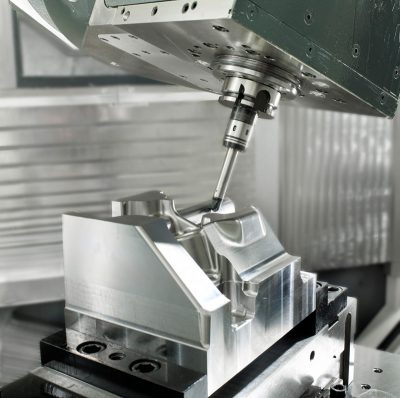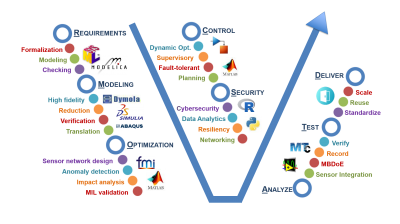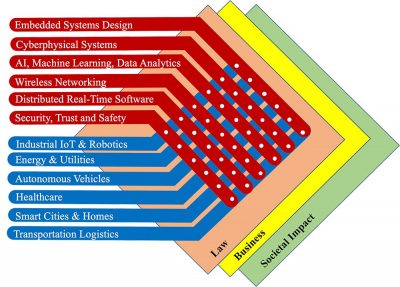This week’s faculty spotlight is on Dr. Peter Luh, who is the SNET Endowed Professor in the Electrical and Computer Engineering Department. He is affiliated with UTC IASE and Booth Engineering Center for Technology (BECAT). Dr. Luh received a Bachelors of Science in Electrical Engineering from the National Taiwan University in 1973. He then went on to receive a Master degree in Aeronautics and Astronautics from the Massachusetts Institute of Technology and a Ph.D in Applied Mathematics from Harvard University. Dr. Luh is a Board of Trustees Distinguished Professor, the SNET Professor of Communications and Information Technologies at the University of Connecticut, Storrs, and a Life Fellow of the Institute of Electrical and Electronics Engineers (IEEE).
Dr Luh is the Director of the Manufacturing Systems Laboratory in the Department of Electrical and Computer Engineering, which focuses on advancing information technologies and mathematical optimization techniques that are of strategic importance to society, including Intelligent Manufacturing Systems, Smart and Safe Buildings, Smart Grid, and decision-making under uncertain, distributed, or antagonistic environments. The research conducted in his lab has been supported by the NSF and other industry partners, such as UTC, Southern California Edison, ISO-New England, MISO, Alstom, Northeast Utilities, GE, and Toshiba, over the past 30+ years. His research has led to over 150 journal papers published, over 320 conference presentations, and 35 Ph.D students graduated.
Research-wise, he has made pioneering contributions to 1). Intelligent manufacturing for efficient production and on-time product delivery; 2). Smart grid for efficient generator coordination and renewable energy integration; and 3). Smart building for energy efficiency and safety. The overall goals of his research focus on efficiency, greenness and sustainability. Behind these three areas of focus/goals is a revolutionary approach to overcome the notorious combinatorial complexity of mixed-integer optimization problems (involving both discrete and continuous decision variables). The keys include an innovative way to formulate problems in a “separable” and “tightened” form, and an advanced price-based decomposition and coordination methodology. They represent two major breakthroughs and new directions in formulating and solving such important but difficult optimization problems. These exciting results were developed together with his graduate students and colleagues, in particular, Assistant Research Professors Mikhail Bragin and Bing Yan, and Associate Professor Peng Zhang.
Dr. Luh received the IEEE Robotics and Automation Society (RAS) Pioneering Award in 2013 for his contributions to the development of near-optimal and efficient planning, scheduling, and coordination methodologies for manufacturing and power systems. Beyond journal papers and conference presentations, Dr. Luh has delivered 140 invited talks around the world. His current research is supported by grants and contracts from the NSF, United Technologies Corporation, ISO-New England, MISO, ABB, Brookhaven National Laboratory, and UConn Provost Academic Plan.
In terms of his teaching career, Dr. Luh is a distinguished and accomplished professor who regularly teaches systems-related courses. Among his 35 Ph.D. students graduated, three received the School of Engineering’s Distinguished Engineering Alumni Award, one is a member of Chinese Academy of Sciences, and one served as a National Communication Commissioner in Taiwan. Professor Luh also has participated many times in the School of Engineering’s week-long daVinci Projects, which are designed for high school mathematics, science teachers, and counselors. During his time here at UConn, he has served as the director of BECAT (1997-2004), and the Head of the Electrical and Computer Engineering Department (2006-2009). He has served on various committees within the university, such as the Faculty Review Board (1997-1999), the Research Advisory Council (1998-1999), the University Academic Vision Committee (2013-2014), and the Center and Institute Review Committee (2017-2019).
Professor Luh has also played a vital role in IEEE. He served as the Editor-in-Chief of IEEE Transactions on Robotics and Automation (1999-2003), the founding EiC of IEEE Transaction on Automation Science and Engineering (2003-2007), RAS Vice President for Publications (2008-2011), and received the IEEE RAS George Saridis Leadership Awards for his exceptional vision and leadership in strengthening and advancing automation. He is currently the Chair of IEEE Technical Activities Board Periodicals Committee for the 2018-2019 term, and oversees 190 IEEE journals and magazines.
 The UConn project aims to develop and demonstrate benefits of using Smart Manufacturing (SM) approaches that are applicable to subtractive and additive precision manufacturing. The main objective of the project is to mitigate energy waste in manufacturing facilities, specifically additive and subtractive manufacturing, using model-based systems engineering principles. One of these principles is a process called Coordinated Utilization, which encompasses the fields of systems engineering, advanced controls, data analytics and secure communication protocols. This specific procedure enables efficiency improvements in the precision machining and hybrid manufacturing of metals/alloys to support cross-industry platforms, such as aerospace and orthopedics. This approach will be used to solve the problem of manufacturing waste in manufacturing facilities through five phases. To start, the requirements will be modeled and analyzed in terms of their energy saving capabilities. Sensor network architectures that identify the potential for energy savings will be implemented and optimized. Then, supervisory control structures will be designed for the realization of energy savings. Manufacturing big data will be reduced and securely communicated, and finally, validation of the resulting energy management systems in the manufacturing setting will be accomplished through a model in-the-loop environment.
The UConn project aims to develop and demonstrate benefits of using Smart Manufacturing (SM) approaches that are applicable to subtractive and additive precision manufacturing. The main objective of the project is to mitigate energy waste in manufacturing facilities, specifically additive and subtractive manufacturing, using model-based systems engineering principles. One of these principles is a process called Coordinated Utilization, which encompasses the fields of systems engineering, advanced controls, data analytics and secure communication protocols. This specific procedure enables efficiency improvements in the precision machining and hybrid manufacturing of metals/alloys to support cross-industry platforms, such as aerospace and orthopedics. This approach will be used to solve the problem of manufacturing waste in manufacturing facilities through five phases. To start, the requirements will be modeled and analyzed in terms of their energy saving capabilities. Sensor network architectures that identify the potential for energy savings will be implemented and optimized. Then, supervisory control structures will be designed for the realization of energy savings. Manufacturing big data will be reduced and securely communicated, and finally, validation of the resulting energy management systems in the manufacturing setting will be accomplished through a model in-the-loop environment.
